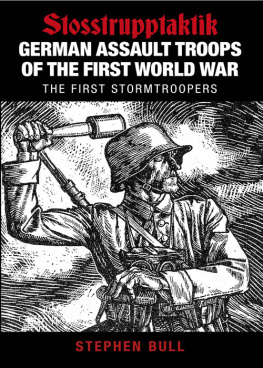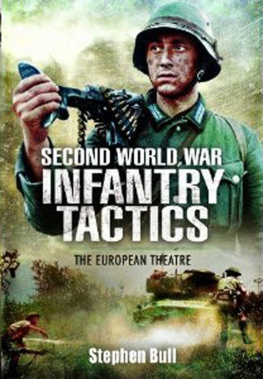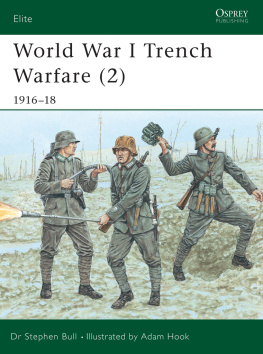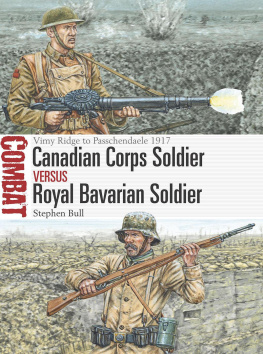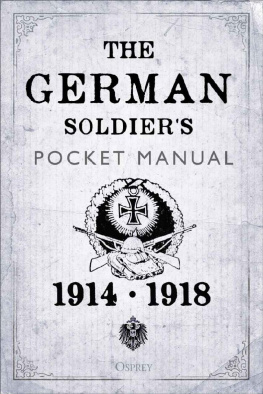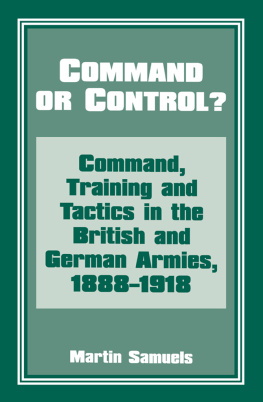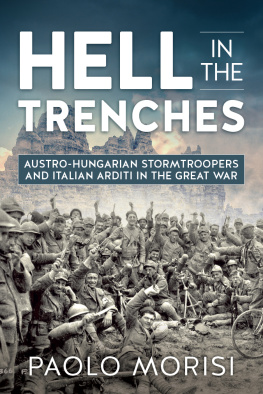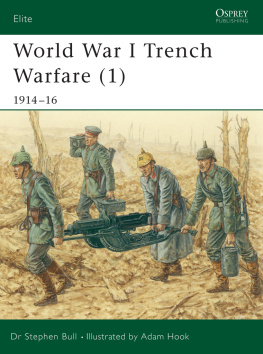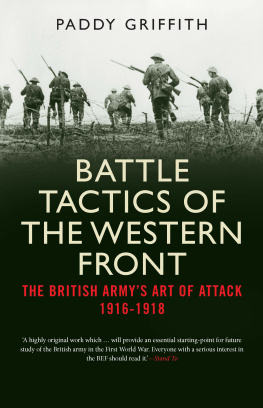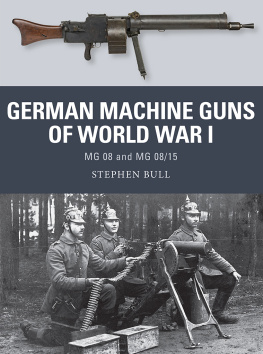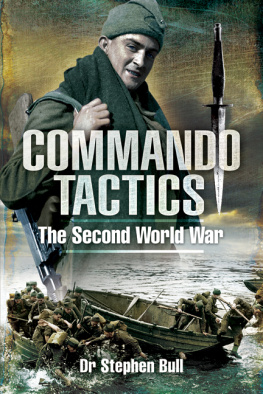1
The European powers may have had very different reasons for going to war in 1914, and many varied objectives, but when it came to their detailed expectations of battle and tactics these were surprisingly similar: the war would be short, and it would be won by the side which attacked most determinedly and persistently. The majority opinion in Germany was definitely that any war would be over quickly. After all, there were plenty of examples of wars since 1860 involving Germany, or German states, which had been very brief. The conclusion of these wars had usually been to the German advantage, and over the years, particularly under the guidance of the Iron Chancellor, Bismarck, war had been widely accepted as an instrument of policy.
The War of the Danish Duchies in 1864 lasted less than six months, and led to the occupation of Schleswig. Famously, the war in 1866 had been a seven weeks war. It ended in Austrias total defeat, and the reining in of Hanover and other hitherto independent states in northern Germany, effectively adding five million people to the Prussian lands in the North German Confederation. The Franco-Prussian War was declared on 19 July 1870, and ended six months later with French capitulation. Paris had been besieged and Alsace and Lorraine seized for Prussia. At the same time the remaining independent states (most importantly Bavaria, Baden and Wurttemberg), were finally influenced to make King Wilhelm of Prussia, Emperor Wilhelm I of Germany. The Second Empire was declared at Versailles on 1 January 1871. The widespread conclusion for many patriotic Germans was that wars were usually quick, and in the longer term a good thing, despite short-term sacrifice. Strangely, and despite his posturing and love of military uniforms and manoeuvres, Wilhelm II, who ascended the throne in 1888, would face stinging criticism declaring him a Peace Kaiser.
Whilst the general expectation was of a short war, there were voices surprisingly little heeded at the time that suggested that any major European struggle between wealthy, heavily populated, and industrialised nations was likely to be both bloody and protracted. Some General Staff planners raised doubts: perhaps the war would not be won in a single campaign, or perhaps the artillery would be insufficient to deal with French and Belgian forts. There were also influential individuals who held contrary views. Amongst these were at least two who were extremely well placed to take an informed position: in Britain, Lord Kitchener, who immediately saw the war as a matter of years, rather than months; and in Germany, Helmuth von Moltke the younger, who was more pessimistic in private than his public face would suggest. In 1905, before he came to the pinnacle of his career as Chief of the General Staff, the brooding Moltke had even offered the surprising opinion that a general European war might be a war of murder. Rather than agreeing with many of his contemporaries who prophesied that any conflict would be over in a year, he foresaw a peoples war which would turn into a long, difficult, painful struggle. If anything, however, this percipience made him bend his efforts all the more towards finding a way to end the titanic struggle quickly. His calculation that reforms in both France and Russia would improve their military efficiency only added greater urgency to the need for a swift war one that would be started soon. So it was that after 1906 Schlieffens now infamous plan was not jettisoned, but modified, still with the major objective of finishing France as rapidly as possible.
There were even tacticians, albeit some of the more erudite theoretical school, who had begun to suggest the idea that weapons had advanced to the stage where present offensive tactics would be ineffective or unworkable. Though events would demonstrate that there was more than a grain of truth in this line of reasoning, none was to offer any definitive solution to the problem he had postulated. In such a vacuum it was scarcely surprising that relatively little investment was made in the development of radically new infantry tactics to meet situations which might, or might not, arise in the event of war. Nevertheless, there were certain practical matters which could be adjusted, and were considered at length long before 1914. Formations, for example, had been changed in the past, and history taught that judicial alterations could be efficacious.
Whether open or closed order formations were more suitable had been a debate which had been going on in the Prussian army even before Germany itself came into existence as a nation state. After the Bruderkrieg war of 1866 which pitted Prussia against Austria, there had been a move towards accepting that modern, rifled small arms had given a new advantage to the defence. There was therefore some questioning of the accepted adage that no war could be won without vigourous offensive action. It was, however, extremely hard to formulate new infantry tactics, not only against the background of an attack orthodoxy, but the very real problem that more dispersed formations meant more dispersed fire, and more difficult command. History seemed to suggest that although skirmishers could exact terrible casualties on formed bodies of troops, when it came to solid bodies closing on scattered skirmishers, the latter had no option but to retire, or be completely overwhelmed by the denser unit.
By the first battles of the Franco-Prussian war it had become usual to push more troops into the skirmish line early in an action, but still this was regarded as a mere preliminary to the real fight. Only after August 1870 and the slaughterhouse of St Privat when the Prussian Guard lost 6,000 men in half an hour, was it finally determined that existing practice had to be seriously modified. So it was that many of the infantry actions in the later stages of the war relied on skirmish lines, rather than deeper formations, to carry the burden of the action. Moreover, full advantage was now taken of the fact that soldiers armed with breech loaders in general, and not just designated skirmishers, could fire from the prone position. Shooting when lying down offered the significant benefits that the shooter was a smaller target and more difficult to see. At the same time, having both elbows and the body on the ground offered a firm tripod to the rifle, and produced far more accurate fire than could be maintained by a soldier standing up, breathing hard, and with the muzzle of his gun wavering around as he picked out a target.
Infantry combat would never be quite the same again. As A.H. Atteridge remarked, writing in 1915:
After these terrible days the old close order was doomed. The skirmishing line became henceforth recognised as the firing line. Instead of merely clearing the way for lines and masses of troops to follow, it was gradually to work its way forward, fed from the rear by reinforcements to replace its losses. It was to be just dense enough to bring as many rifles as possible into action. It was to be supported by other lines in the same open order from which it could be fed with men and ammunition, and the decision would be produced by its beating down the fire of the opposing enemy, and as this return fire weakened the moment would come when the supports in rear could go forward with the firing line to clear the hostile position.
This new kind of fighting evolved itself at first without any precise orders or directions. Officers and men found they could only get forward by opening out, feeding the firing line, and working onwards from cover to cover. In the battles of earlier days it was only the skirmisher who could lie down behind a rock or bank under fire to take cover; for the officers and men of the main fighting line such an attitude would have been regarded as cowardly. But under the storm of bullets from new rifles, taking cover became a necessity. For the German Army of 1870 battle experiences gave very plain lessons, which however were only learned with much sacrifice of life. In the second stage of the war the Staff began to embody these lessons in provisional regulations and orders.

